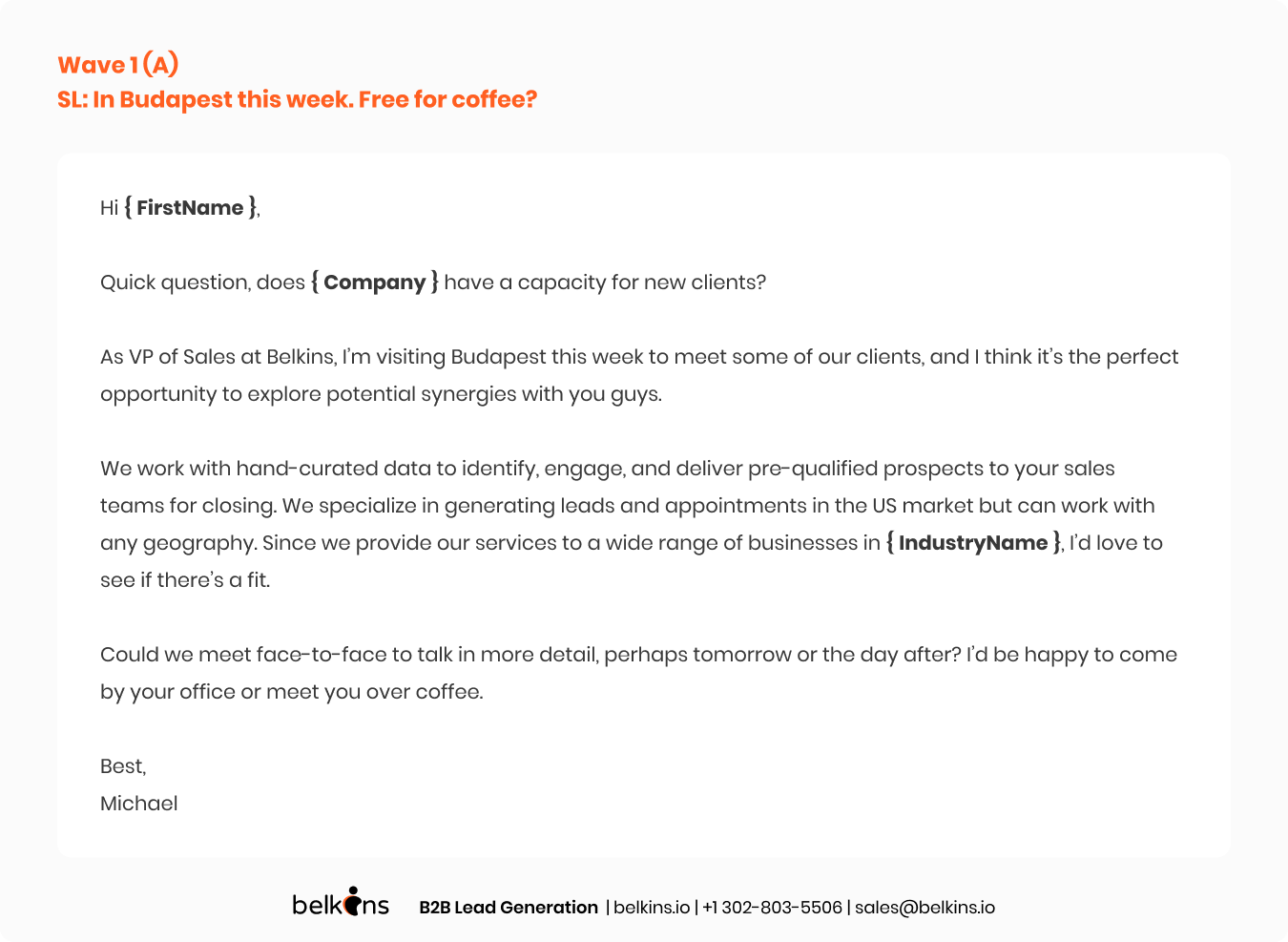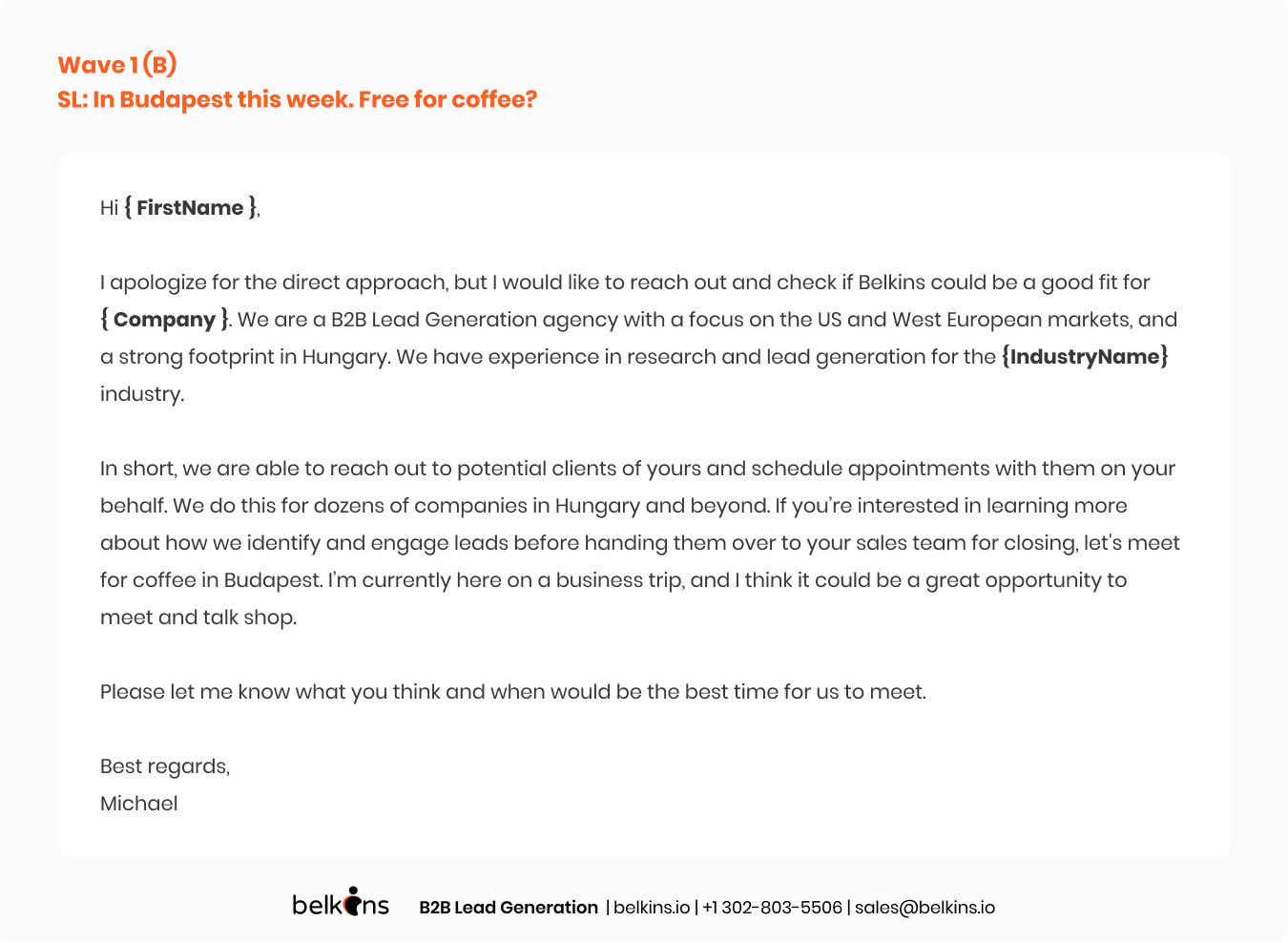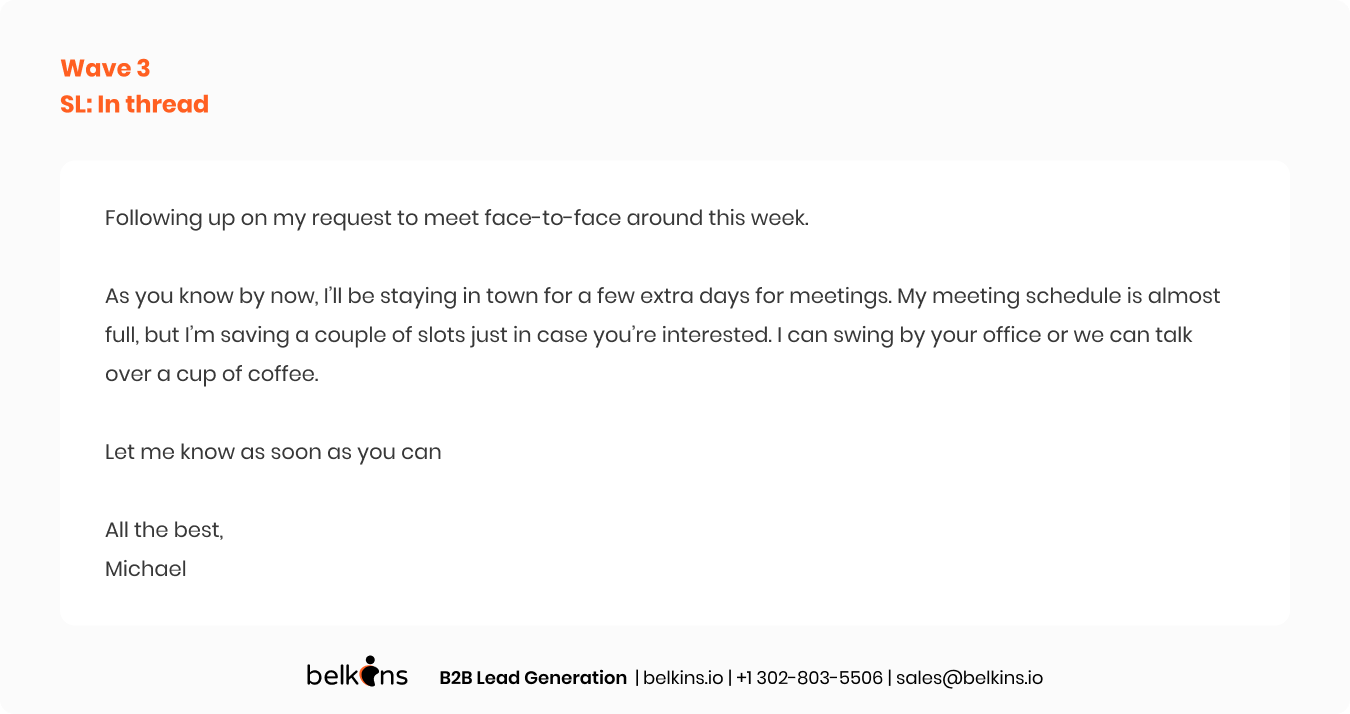Belkins offers personalized outreach campaigns and B2B lead generation insights to a large variety of industries. However, as shown by the experience of the Belkins’ sales executive, there is are always new opportunities to explore. Face-to-face meetings can become a compelling argument in your B2B outreach, so you should use your location as leverage —and don’t turn away from the possibilities. Every email campaign is usually launched after research and careful planning. However, sometimes, it’s the opportunity that sets things in motion.
Our Managing PartnerMichael Maximoff went to Budapest on a vacation. When it turned out he had to prolong his stay in the city for another week, Michael decided to maximize his presence by launching short cold outreach emails for Hungarian companies?
Why was that possible?
We had a large database of potential leads in Hungary. Our researchers have qualified them as prospective customers and engaging them was beneficial to our activity in Europe. When it came to the opportunity to meet our prospects face to face, we did our best to prepare the data and the content for the mission.
Why are face-to-face meetings important?
According to the Loughborough University research, 96.6% of participants preferred face-to-face meetings over more remote methods of communication. Their preference is explained by three important reasons:
1) Human factor;
The approach to B2B is becoming more personalized. It concerns every direction of your B2B procedures, from template customization to the way you handle your meetings. Naturally, your prospects will be more inclined to meet the representative of a vendor in person —it erases barriers, creates more opportunities for genuine conversation, and is generally perceived as more satisfying and productive than a phone call.
2) Proof of efficiency;
When the vendor is willing to walk the extra mile to accommodate their potential customers, it makes an incredibly positive impression on the target audience. Nowadays, everything is about the prospects’ comfort and convenience, so if you provide them with more options at the very beginning of your dialogue, they would be more likely to choose you.
3) Additional flexibility.
When companies choose a B2B lead generation service vendor that is located in another region, they are apprehensive about the productivity of their workflow. They want fast communication, instantly delivered messages, and no holdups or delays due to different time zones or any other obstacles. When you show that the distance is not an issue and you can attend to your prospects’ needs, you assure them that your cooperation will be smooth and steady.
What did we do?
Michael made a task for our copywriting teams. He made sure to provide the guidelines for the templates, so our copywriters would shape the necessary message and motivate the recipients to discuss a face-to-face meeting. Our copywriters wrote a set of templates. The cadence consisted of four waves-one introduction email and three follow-ups.
Introduction email


Follow-ups
When you work with B2B email templates, you should be prepared that your introduction emails won’t always be responded to. Your prospects receive hundreds of emails every day and their schedules are quite busy. Therefore, your message may not be noticed instantly and then slowly float to the bottom of the inbox.
In that case, your potential prospects will remain unaware of the benefits they’re missing. It makes sense to send them reminders and encourage them to contact you.



It’s crucial that your cadence is wholesome, complete with introductions, and the final emails that request either to respond or at least send a clear and firm NO.
We all want every prospect to respond positively, but in proper B2B conversation, you expect every outcome and respect your prospect’s choices.
Because of this, you should avoid coming off as forceful or obnoxious and instead back away gracefully. Maybe sometime later the quality of your communication will make the recipients who responded negatively seek you and ask you about your offers.
Our end results
In total, Michael had two weeks to reach and meet the potential recipients. He sent introduction emails to 250 companies in Budapest.
Why so many?
You can’t send emails to three companies and expect results. To start getting positive responses you need to increase the number of recipients. Out of 100 prospects, only 3 will respond. The process of B2B communication is very specific and requires many adjustments and a lot of flexibility in order to be successful.

In 24 hours after sending the first emails, Michael scheduled 6 appointments. Additionally, he booked 4 follow-up calls.
In all of these cases, he received a response without having to send follow-up emails. This is an incredibly positive result because to get 10 appointments, we typically need to send emails to 500 - 700 leads. It also usually takes a week and around 3 or 4 follow-ups to nurture an appointment. In Michael's case, we only used 250 leads and got productive results in a very short period.
Key takeaways
- Don’t ignore the potential of face-to-face meetings. It’s hard to deny that the location contributed greatly to the success of the Budapest campaigns. Business owners are more responsive when there is an opportunity to discuss matters with a person in an office or over a cup of coffee. Additionally, face-to-face appointments offer more flexibility, allowing your prospects to plan around and go on with their business, as usual.
- If there is an opportunity, use it. Always know your resources and options. Sometimes a challenge can be transformed into a possibility for new connections and B2B sales leads relationships.
- Start integrating face-to-face meetings into your working routine. Our most prominent clients such as AndersenLabs and Digital Knights have injected considerable value into their sales development because their sales executives could do much more than discuss the offer via a phone call. They traveled to the potential clients’ locations to meet them in person and talk about cooperation opportunities.



